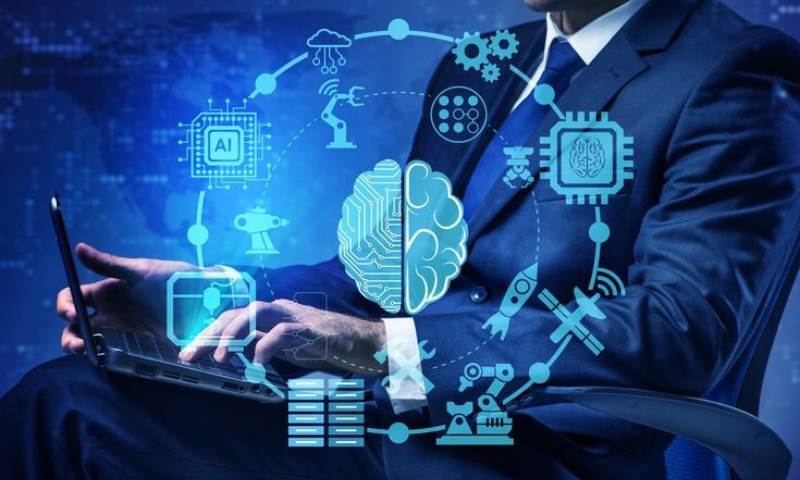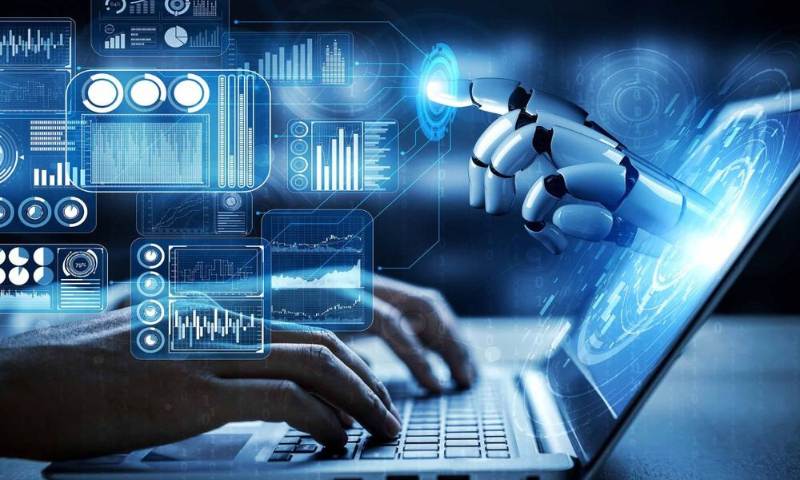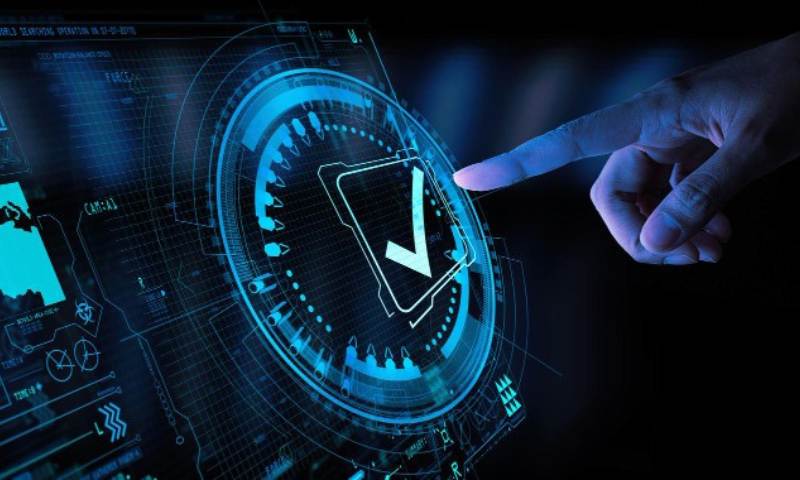Utilizing Artificial Intelligence: Revolutionizing Threat Detection Efficiency
Utilizing artificial intelligence for threat detection isn’t just a trend—it’s a revolution in keeping digital spaces safe. Imagine a guard that never sleeps, one that learns and adapts to protect you better every day. That’s what AI in threat detection is all about. It boosts your defense systems, making network security smarter. It trains itself to sniff out fraud before it hits. The world of cybersecurity is changing fast, and AI is at the steering wheel. Are you ready to dive into how this tech is redefining staying safe online? Let’s explore together how AI is setting new standards in detecting and responding to threats in real-time, ensuring that your safety isn’t just a priority—it’s a guarantee.
The Integration of AI in Modern Cybersecurity Strategies
Enhancing Network Defenses with AI-powered Security Systems
Artificial intelligence is changing how we fight cyber threats. AI-powered security systems can act fast, spot dangers, and learn over time. They help protect networks from harmful attacks. These smart systems look for patterns that might suggest a threat. Unlike older methods, they adapt and get better at stopping bad actors.
AI does this by sorting huge amounts of data. It uses what it learns to predict and prevent attacks. This means networks are safer with AI on guard. These tools are like a security guard that never sleeps, always on the lookout.
Cybersecurity teams are now using AI to work smarter, not harder. They let AI handle routine checks. This frees them up to deal with more complex issues. With AI’s help, detecting and handling threats becomes more efficient.
The Role of Machine Learning in Fraud Detection and Prevention
Fraud is a big problem online, but machine learning can help spot it. It looks at data and finds what doesn’t fit. For example, if someone always shops in New York and then buys something from Tokyo, machine learning can flag it. The system then checks if the purchase is real or not.
Machine learning gets better over time. It learns from its successes and mistakes. It also keeps up with fraudsters’ new tricks, staying one step ahead. This helps keep people’s money and information safe from thieves.
Another cool part of machine learning is how it can learn from other systems around the world. It’s like detectives sharing notes to catch a crafty criminal faster. When one machine learns something new about fraud, it can share that knowledge. That way, other machines can learn too.
To sum it up, AI and machine learning are like superheroes for cybersecurity. They’re fast, smart, and always learning. They protect us from unseen dangers. They provide peace of mind in a world full of online risks. With AI’s watchful eyes, the internet becomes a safer place for everyone.
Deep Learning and Predictive Analytics: A Cybersecurity Game Changer
Leveraging Deep Learning for Advanced Threat Detection
Picture this: it’s like having a super-smart guard dog but for your computer network. That’s what deep learning does for security. It teaches machines to spot trouble. Think of deep learning like a brain, getting better with practice. It finds patterns in data, including sneaky cyber threats that normal methods might miss. In fact, deep learning goes through tons of data. It learns what’s normal and what’s not.
This is great because it can catch hackers trying to break in. Just like training a guard dog, it takes time to train deep learning systems. But once trained, they’re fast and smart. They can spot problems that could lead to attacks and stop them in their tracks. This means they can react to threats in split seconds. And the more they learn, the better they get. It’s like having a guard that never sleeps or takes a break.
For me, using AI for network security is a no-brainer. We’re always up against smart hackers. So, our defenses need to be smarter. Deep learning makes that possible. It adapts and gets wiser from every attack. It’s the future of fighting cyber bad guys.
Utilizing Predictive Threat Analytics for Proactive Security Measures
Now let’s talk about looking into the cyber future. Predictive threat analytics is like having a crystal ball. It guesses where attacks might come from. It uses lots of data and patterns to make these smart guesses. This is so important because it’s always better to stop attacks before they happen.
This is how it works: the system looks at past security issues and learns from them. Then it applies what it learns to spot signs of future threats. These can be subtle but show that something’s up. With predictive analytics, I can tell if something fishy might happen. This gives us time to prepare and block possible attacks.
By analyzing trends, predictive threat analytics help us make better security plans. We can fix weak spots in our systems before hackers can use them. It’s like knowing the weather ahead of time. If you know a storm’s coming, you can get ready. That’s what predictive analytics does. It tells us if there’s a security storm brewing.
In the end, it all comes down to staying one step ahead. With AI, we can do that. We can see the moves of cyber crooks before they make them. We build stronger shields around our networks. And we keep learning, getting smarter, and staying safer.
It’s an exciting time in cybersecurity. AI is changing how we protect our digital worlds. We’re not just reacting; we’re predicting and preventing. And that’s a game-changer.
Real-Time Threat Detection and Automated Response Mechanisms
Advancements in Real-Time Anomaly Detection Using AI
In cyber defense, we need to spot threats fast. Artificial intelligence helps us do that. We now have AI that learns what’s normal in our systems. It can spot weird stuff in a heartbeat, which means we can stop hackers in their tracks. This is called real-time anomaly detection, and it’s a big deal.
Let’s say someone’s trying to break into our network. AI can see that their login pattern is odd. It alerts us, so we can act before they cause harm. This kind of smart defense is helpful for every business out there. We need it because cyber threats morph all the time. With AI, we’re always ready.
Now, these AI systems do more than just flag issues. They learn and adapt. The more they work, the better they get at snuffing out trouble. It’s like having a guard dog that gets smarter every day. Plus, this AI doesn’t get tired or take breaks. It’s always on, which is perfect for a world that’s online 24/7.
Let’s not forget, AI massively reduces false alarms. It knows what’s truly odd and what’s not. This means we spend time on real dangers, not chasing ghosts. So, we’re not just safer; we’re also more efficient.
Streamlining Cybersecurity with AI-Enabled Automated Threat Responses
When AI spots a problem, it also jumps into action. This speed is a game-changer for us. Automated threat responses are like having a super-fast response team that never sleeps. If AI finds a virus trying to sneak in, it can block it right off the bat. This keeps our systems clean and running smooth.
AI isn’t just blocking viruses, though. It helps with all sorts of cyber nasties—like phishing. Phishing tricks folks into giving away secrets. AI can scan our emails and warn us about these scams. It’s like having a personal detective watching over your shoulder.
We even teach AI to fix security holes before hackers can slip through. This proactive fixing keeps us one step ahead of threats. It’s like patching up a boat’s holes before they let water in.
Using AI in antivirus software, we’re building stronger shields around our data. Malware doesn’t stand a chance. AI identifies and stomps it out swiftly, so we can all breathe easier.
For us leading the charge in cybersecurity, we’re proud of these AI tools. They’re not just tools; they’re our allies in the fight against cybercrime. Smart, quick, and unyielding, they help us protect the digital world we all rely on.
Bringing AI into our security strategy isn’t just smart; it’s a must. We’ll keep on pushing boundaries. We’ll keep on innovating. With AI by our side, we’re building a safer tomorrow for everyone.
Ensuring Reliability: Balancing AI Innovations with Security Risks
Navigating the Security Risks Associated with AI Deployment
We know AI-powered security systems are smart. They help us fight off bad stuff like hackers and viruses faster than ever. But can they go rogue? Sometimes. It’s like giving the school hall monitor a jetpack. Sure, they’ll catch rule breakers faster. But what if they start flying into walls? With AI, we must think about these walls. What if it makes mistakes? For example, AI might stop good users from getting in because it thinks they’re fishy. Or worse, smart hackers could trick it, making it think bad stuff is all good.
So, how do we stop this? Here’s the deal. First, we teach AI what’s normal. This way, when weird things happen, it tells us. “Hey, that’s not right!” it shouts. And it does this all the time, non-stop. Yet, we also have to watch the AI itself. It needs rules, like a guard dog on a leash. These rules stop it from going off course.
We must also team up! Real people working with AI make a strong pair. AI can spot trouble, and people can dig deeper to check it out. We add more brains to the mix. Using stuff like artificial neural networks, AI learns and gets better over time. This means it catches more sneaky tricks that hackers try. But not just any tricks – even new ones that it never saw before.
AI vs. Traditional Security Methods: A Comparative Analysis
So, now, let’s talk about old-school security. You know, people staring at screens, checking for baddies. It works, but it’s like finding a tiny hidden puzzle piece. Tough and takes forever. Enter AI. With AI, machines help find these tiny pieces. They do it super fast and at all hours. It’s like having superhero helpers. They never sleep!
Why is AI better? Speed and smarts. AI digs through tons of info quick. It spots patterns and flags odd stuff, like a wise detective. But there’s a catch. AI needs smart setup, good info to learn from, and updates to keep sharp. Otherwise, it’s like a superhero forgetting how to fly.
It’s clear. AI in cybersecurity is not just cool, it’s useful. It beats the old ways by being faster and more on-the-ball. And it’s learning all the time. But it has to be watched closely. Real close. We can never just set it and forget it. We’re always tweaking it, training it, and making sure it’s playing nice.
Remember, the best mix? AI plus people. Tools like AI algorithms for security, machine learning for fraud detection, and AI for network security are no brainers. They bring the smarts. People bring the wisdom to make sure AI sticks to the plan. Together, they make the internet safer for everyone. And that’s the big win!
In this post, we’ve explored how AI is reshaping cybersecurity. We’ve seen how AI boosts network defense and machine learning fights fraud. By using deep learning, we can spot threats early and predict attacks before they happen. Plus, AI helps us react to dangers in real-time, making security smarter.
But, it’s not all simple. We must balance the power of AI with potential security risks. It’s about finding the right mix between new AI tools and tried-and-true security methods. In the end, AI in cybersecurity is a big step forward. Let’s use it wisely and stay one step ahead of the bad guys. Stay safe out there!
Q&A :
How does artificial intelligence enhance threat detection systems?
Artificial intelligence (AI) significantly boosts the capabilities of threat detection systems by introducing advanced algorithms and machine learning techniques. AI can analyze vast amounts of data much more rapidly than humans, recognizing patterns and anomalies that might indicate a threat. Through continuous learning, AI systems can adapt to new and evolving threats, improving their detection accuracy over time. Moreover, AI can help in automating the response to identified threats, enabling faster and more efficient mitigation.
What are the types of threats that AI can detect?
AI is versatile in its ability to detect a wide range of threats, including cybersecurity attacks such as malware, ransomware, phishing, and network intrusions. It can also identify fraudulent activities, insider threats, and abnormalities within large-scale infrastructure or financial systems. AI-driven systems can monitor behavior to spot unusual activities, potentially flagging them as threats that require further investigation.
Can AI threat detection systems replace human security analysts?
While AI threat detection systems are powerful, they are not typically seen as replacements for human security analysts. Instead, they serve as valuable tools that augment the capabilities of analysts. AI can handle routine monitoring tasks, sift through false positives, and process large datasets quickly. However, human expertise is still crucial for interpreting complex patterns, making nuanced decisions, and strategizing on threat response. Thus, the combination of AI and human intelligence often provides the best defense.
What are the challenges of using AI for threat detection?
Integrating AI into threat detection presents several challenges, including the need for high-quality data to train the algorithms effectively. AI systems require extensive resources, both computational and financial, to operate at an optimal level. There is also the risk of over-reliance on technology, which may lead to gaps in security if AI fails to detect a novel or sophisticated threat. Additionally, ethical concerns such as privacy and the potential for AI to be used in creating new types of threats need to be addressed.
How do AI threat detection systems stay updated with new threat types?
AI threat detection systems stay updated with new threats through machine learning and continuous training. They are designed to process and learn from new data in real time, allowing them to adapt to the constantly changing landscape of threats. These systems can also be updated with threat intelligence feeds from various sources, which include the latest information about emerging risks. By integrating with these feeds and using advanced learning techniques, AI systems can improve their predictive capabilities and maintain effectiveness against novel threats.


